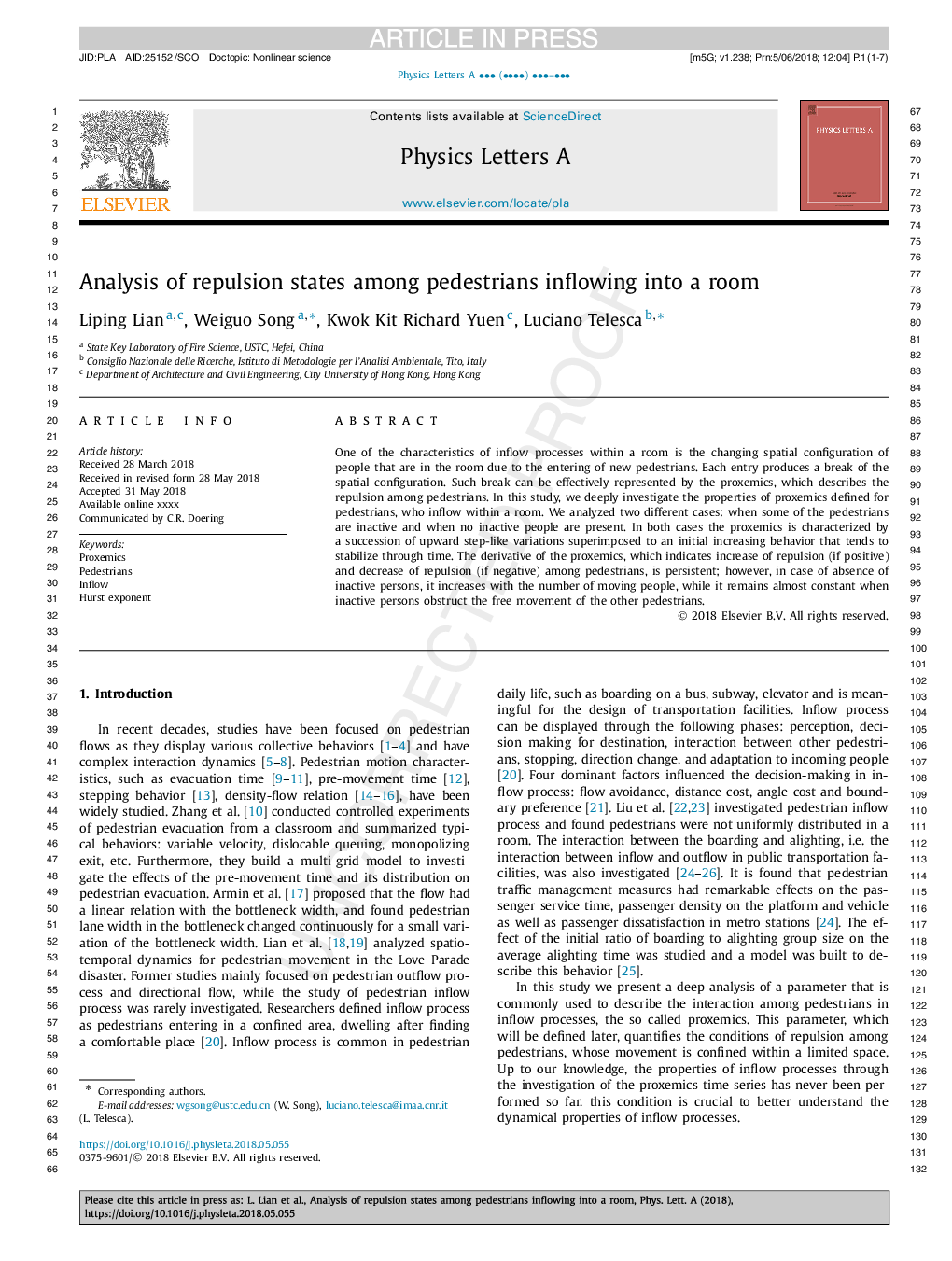| Article ID | Journal | Published Year | Pages | File Type |
|---|---|---|---|---|
| 8203045 | Physics Letters A | 2018 | 7 Pages |
Abstract
One of the characteristics of inflow processes within a room is the changing spatial configuration of people that are in the room due to the entering of new pedestrians. Each entry produces a break of the spatial configuration. Such break can be effectively represented by the proxemics, which describes the repulsion among pedestrians. In this study, we deeply investigate the properties of proxemics defined for pedestrians, who inflow within a room. We analyzed two different cases: when some of the pedestrians are inactive and when no inactive people are present. In both cases the proxemics is characterized by a succession of upward step-like variations superimposed to an initial increasing behavior that tends to stabilize through time. The derivative of the proxemics, which indicates increase of repulsion (if positive) and decrease of repulsion (if negative) among pedestrians, is persistent; however, in case of absence of inactive persons, it increases with the number of moving people, while it remains almost constant when inactive persons obstruct the free movement of the other pedestrians.
Related Topics
Physical Sciences and Engineering
Physics and Astronomy
Physics and Astronomy (General)
Authors
Liping Lian, Weiguo Song, Kwok Kit Richard Yuen, Luciano Telesca,
